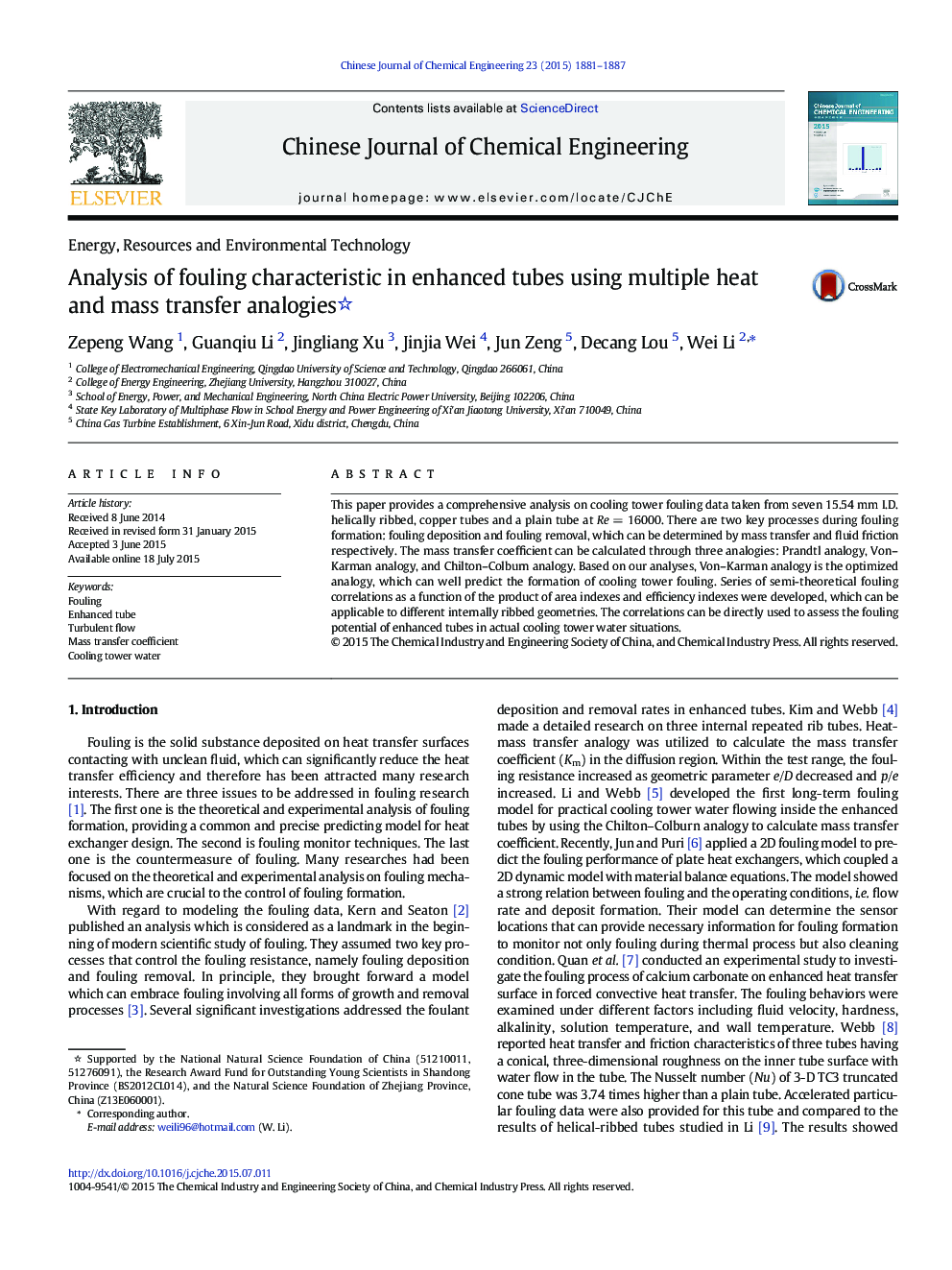| Article ID | Journal | Published Year | Pages | File Type |
|---|---|---|---|---|
| 167968 | Chinese Journal of Chemical Engineering | 2015 | 7 Pages |
This paper provides a comprehensive analysis on cooling tower fouling data taken from seven 15.54 mm I.D. helically ribbed, copper tubes and a plain tube at Re = 16000. There are two key processes during fouling formation: fouling deposition and fouling removal, which can be determined by mass transfer and fluid friction respectively. The mass transfer coefficient can be calculated through three analogies: Prandtl analogy, Von–Karman analogy, and Chilton–Colburn analogy. Based on our analyses, Von–Karman analogy is the optimized analogy, which can well predict the formation of cooling tower fouling. Series of semi-theoretical fouling correlations as a function of the product of area indexes and efficiency indexes were developed, which can be applicable to different internally ribbed geometries. The correlations can be directly used to assess the fouling potential of enhanced tubes in actual cooling tower water situations.
Graphical abstractFouling is the solid substance deposited on heat transfer surfaces contacting with unclean fluid, which can significantly reduce the heat transfer efficiency. It has been known as the major unsolved problem in heat exchangers. This paper provides a comprehensive analysis by using the Prandtl analogy, the Von–Karman analogy, and the Chilton–Colburn analogy on cooling tower fouling data taken from seven 15.54 mm I.D. helically ribbed, copper tubes and a plain tube currently used in the industry. Series of semi-theoretical fouling correlations were developed, which can be applicable to different internally ribbed geometries. The correlations can be directly used to assess the fouling potential of enhanced tubes in actual cooling tower water situations.Figure optionsDownload full-size imageDownload as PowerPoint slide
